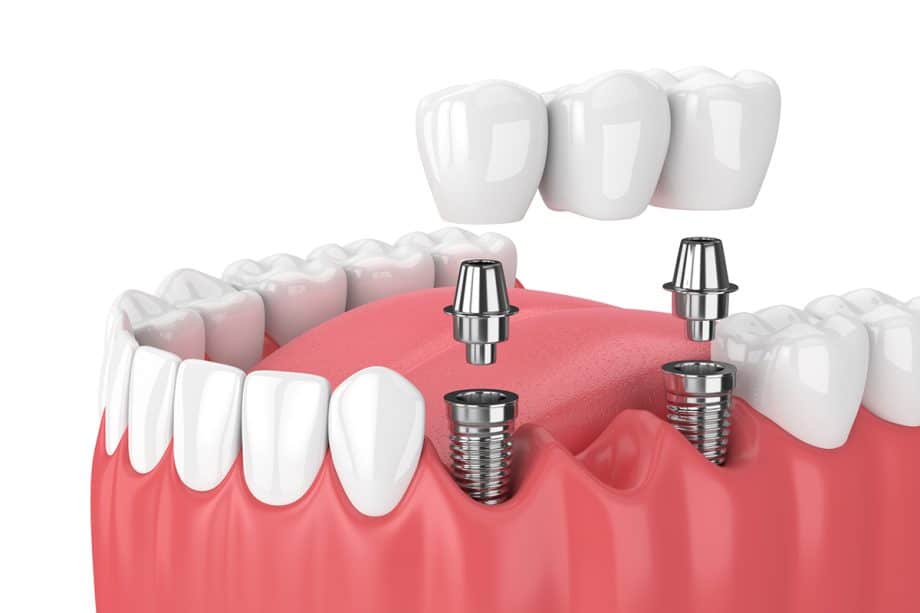A dental bridge replaces one or a few teeth in a row. It is a dental prosthetic, the official name for artificial teeth. With any change to your teeth there may be an adjustment period while you adapt to the way it feels.
How long does it take to get used to a dental bridge? Here’s what you can expect.
What is a Dental Bridge?
A dental bridge is a row of connected artificial teeth with crowns on one or both ends. The crowns fit over the healthy teeth on each side of the gap with pontics (artificial teeth) suspended between them. The pontics sit on top of the gums and are supported by the crowns.
A traditional bridge can replace anywhere from 1 to 3 adjacent teeth. Implant supported bridges can replace more teeth with dental implants on each end.
What Does a Dental Bridge Feel Like?
A dental bridge is custom made to fit your mouth. This means that it won’t necessarily feel any different than your natural teeth. If your tooth or teeth have been missing for a while, it may feel different because there is no longer a gap in your teeth. You may experience some mild irritation where the pontics meet your gums. The support teeth may also be a little tender due to the increased pressure of supporting a bridge. You may also experience sensitivity in the support teeth.
Getting Used to Your Dental Bridge
It can take up to 2 weeks to get used to a dental bridge. This means that any discomfort should subside within this time period. If your bridge is still uncomfortable after 2 weeks, contact your dentist to ensure that it is properly placed and sized.
You can get ease your discomfort during the adjustment period with the following tips:
- Avoid cold or hot foods if your teeth are sensitive. Allow them to reach room temperature before consuming.
- Take over the counter pain medication, especially anti-inflammatory types such as ibuprofen.
- Use toothpaste for sensitive teeth.
- Rinse with lukewarm saltwater to ease gum irritation.
- Eat soft foods if your teeth are tender and avoid chewing anything solid in that area of your mouth.
Benefits of a Dental Bridge
- Restores dental function. A bridge allows you to chew food as you would with your natural teeth, at least for the most part. You should still avoid extremely hard or chewy foods in that area of your mouth.
- Looks natural. A dental bridge can be designed to match your neighboring teeth in color and size for a natural appearance.
- Provides a solution when there is bone loss in the jaw. When a tooth is missing for a period of time, the support structures for the tooth will deteriorate. Jaw bone resorption, or bone loss in the jaw, is common. A dental bridge can still be placed even if there is significant loss of bone structure.
Frequently Asked Questions About Dental Bridges
How long does a dental bridge last?
A dental bridge lasts an average of 15-20 years with good care and maintenance. An implant supported bridge can last a lifetime.
How do I clean my bridge?
It is important to clean the space between your bridge and gums to remove plaque. This can be done with a thin round brush, floss, or a water flosser.
Learn More About Bridges From Aliso Smiles
Aliso Smiles provides dental bridge restorations for patients with one or more missing or damaged adjacent teeth. Call 949-916-7800 or contact us today to learn more and schedule an appointment.

